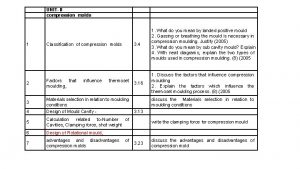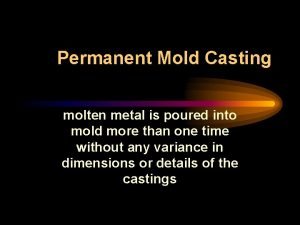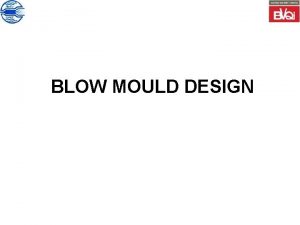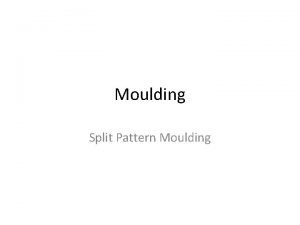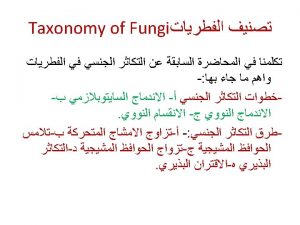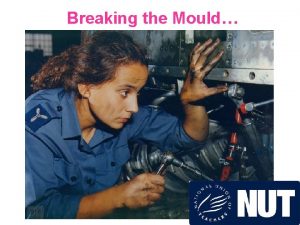Moulding Materials and their Characteristics Mould Materials Moulding







- Slides: 7

Moulding Materials and their Characteristics Mould Materials, Moulding Sands, Characteristics of Foundry Sands

Moulding Materials Metals: - Including grey cast iron, steel and anodised aluminum. Non Metals: - Including Moulding, sands, graphitizes, plaster of Paris, silicon carbide, ceramic and wax etc.

Moulding Sands Natural Sand: - Which contains sufficient amount of binding clay, and therefore, no more binders are required to be added to them. Silica Sand: - Which do not passes the clay content and need addition of a suitable binder to make them useable for foundry work. They are sometimes called sharp sands.

Sand Characteristics A large variety of molding materials is used in foundries for manufacturing molds and cores. They include molding sand, system sand or backing sand, facing sand, parting sand, and core sand. The choice of molding materials is based on their processing properties. The properties that are generally required in molding materials are: Refractoriness It is the ability of the molding material to resist the temperature of the liquid metal to be poured so that it does not get fused with the metal. The refractoriness of the silica sand is highest. Permeability During pouring and subsequent solidification of a casting, a large amount of gases and steam is generated. These gases are those that have been absorbed by the metal during melting, air absorbed from the atmosphere and the steam generated by the molding and core sand. If these gases are not allowed to escape from the mold, they would be entrapped inside the casting and cause casting defects. To overcome this problem the molding material must be porous. Proper venting of the mold also helps in escaping the gases that are generated inside the mold cavity.

Green Strength The molding sand that contains moisture is termed as green sand. The green sand particles must have the ability to cling to each other to impart sufficient strength to the mold. The green sand must have enough strength so that the constructed mold retains its shape. Dry Strength When the molten metal is poured in the mold, the sand around the mold cavity is quickly converted into dry sand as the moisture in the sand evaporates due to the heat of the molten metal. At this stage the molding sand must posses the sufficient strength to retain the exact shape of the mold cavity and at the same time it must be able to withstand the metallostatic pressure of the liquid material. Hot Strength As soon as the moisture is eliminated, the sand would reach at a high temperature when the metal in the mold is still in liquid state. The strength of the sand that is required to hold the shape of the cavity is called hot strength. Collapsibility The molding sand should also have collapsibility so that during the contraction of the solidified casting it does not provide any resistance, which may result in cracks in the castings. Besides these specific properties the molding material should be cheap, reusable and should have good thermal conductivity.

Flowabilitiy or Plasticity: - It is the property of the sand due to which it flows during ramming to all portions of the Moulding flask, packs properly around the pattern to acquire the desired shape and distributes the ramming pressure evenly to all parts of the Mould. Adhesiveness and Cohesiveness

Terminology of Foundry Sand Green Sand Dry Sand Facing Sand Parting Sand Floor, Black or Baking Sand Core Sand Oil Sand Molasses Sand



